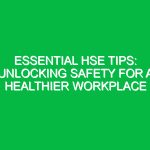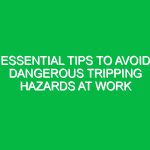Good morning team! Today, we will delve into the topic of How We React to Our World within the Health, Safety, and Environment (HSE) domain. Understanding our reactions to the world is crucial for maintaining a safe and healthy work environment. Let’s explore this together to ensure we all stay safe and productive on the job.
Understanding How We React to Our World
Our reactions to the world around us play a significant role in our daily operations. Whether it’s responding to hazards, communicating effectively, or making quick decisions, how we react can impact our safety and well-being. Let’s break down this concept further.
Why Does It Matter?
Reacting appropriately to different situations is essential for preventing accidents and promoting a culture of safety. By understanding our reactions and learning how to manage them effectively, we can create a safer work environment for everyone.
Key Aspects of Reacting to Our World
When it comes to HSE, our reactions to the world involve factors such as situational awareness, communication skills, decision-making under pressure, and stress management. These components are crucial for maintaining a safe workplace.
Identifying Potential Hazards
One important aspect of how we react to our world is being able to identify potential hazards in our environment. By staying observant and alert, we can proactively address risks before they escalate into accidents.
Best Practices for Managing Our Reactions
Now that we understand the importance of how we react to our world, let’s discuss some best practices for managing our responses effectively:
- Stay Calm: In stressful situations, it’s important to remain calm and composed to make rational decisions.
- Communicate Clearly: Effective communication is key to ensuring that everyone is on the same page and aware of potential risks.
- Follow Procedures: Adhering to established procedures and protocols can help minimize risks and maintain a safe working environment.
Real-Life Examples
Imagine a scenario where a team member notices a spill on the floor. How they react to this situation can determine whether an accident occurs. By promptly cleaning up the spill and alerting others, they can prevent slips and falls.
Ensuring Compliance and Safety
It’s essential to comply with all relevant regulations, standards, and company policies related to HSE. By following these guidelines, we not only ensure our safety but also fulfill our legal obligations to maintain a secure workplace.
Conclusion
Today, we’ve explored the importance of how we react to our world in the context of health, safety, and the environment. By understanding our reactions and implementing best practices, we can create a safer and more productive work environment for all. Thank you for your attention and commitment to safety. Stay safe out there!


